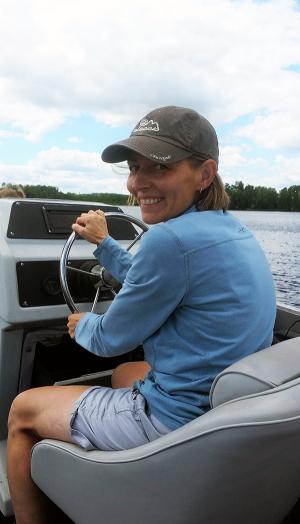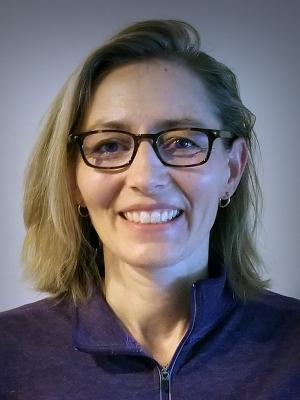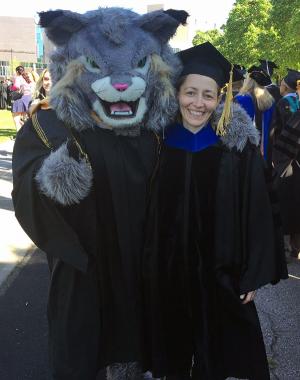Five questions for Joanne Addison
While in graduate school at Purdue University, Joanne Addison’s research and teaching focused on improving the literacy abilities of underrepresented students and students for whom English is not a first language.
“And by literacy abilities, I mean not just the basic ability to read and write, but the ability to be literate actors in the world,” Addison said.
Her interest in continuing such work led her in 1995 to the University of Colorado Denver, where she’s a professor of English in the College of Liberal Arts and Sciences.
“This was my first job out of graduate school,” she said. “I’m still grateful to be here.”

Her work continues to focus on improving the literacy abilities of underrepresented students, but also has taken a strong turn toward digital studies.
“For example, I recently taught a class on the technologies of writing,” she said. “My students and I explored the history of writing as a technology and its effects on human development as far back as 3000 BCE up to the present time. The course concluded with a consideration of the ways that technologies of writing structure our daily lives. I was amazed by my students’ insights and engagement with the course material. I can’t wait to teach it again.”
Besides teaching and research, Addison is deeply involved with shared governance at CU. She has served as chair of the CU Denver Faculty Assembly and vice chair of the systemwide Faculty Council. The latter’s first meeting of the semester, noon to 3 p.m. today at 1800 Grant St., will mark her official debut as chair.
1. How did you first become involved with Faculty Council?
My first experience with system-level shared governance work was as a member of Faculty Council’s GLBT committee about 20 years ago when we were working to include sexual orientation in CU’s nondiscrimination policy and to obtain domestic partner benefits. I believe it was 2001 that sexual orientation was added to our policy. And, after many years of work and at least two failed votes, a majority of both Democrats and Republicans voted to offer domestic partnership benefits out of a sense of fairness because the university should offer health care to all of its employees and their families.
2. You received a Distinguished Service Award last year from Faculty Council, which praised you for, among other things, an ability to build consensus with faculty and administration. What are the keys to doing that?
In university settings, we often operate by consensus. Even if, in the end, we take an up or down vote, there’s often a process preceding that vote meant to build consensus. I always try to find out not just what the positions are that people hold but also why they hold those positions.
If you know what everyone’s needs and interests are, you have a much better chance of negotiating a position of strong agreement – not total, but strong – by all involved.
3. How do you define shared governance?
For me, shared governance means that we all share in the rights and responsibilities of making CU the best university system it can be. And that requires us to take the time to involve as many different voices at as many different levels as possible in the decision-making process, even when it’s not easy or convenient.
A culture of shared governance needs to be nurtured, respected and periodically assessed for effectiveness. Perhaps the hiring of a new president marks a significant opportunity for us to assess the health of our shared-governance practices.
4. How do you expect the Faculty Council to be involved in the search for the next CU president?
Faculty Council doesn’t have an official role in the search process, although I certainly hope that we will be one of the central voices in this process. To this end, we are working to bring two regents to one of our first meetings to talk about the search and what we’d like to see in our next president.
I do hope that faculty members from all four campuses, nominated by their respective Faculty Assemblies, have a seat on the search committee. While we are all part of the same system, our campuses are distinctive enough in mission and vision that having representatives from each campus is important to the process.
If we have a search committee composed of many different stakeholders who are willing to engage in a consensus-building process to identify the top candidates to send to the regents, we have a much better chance of picking the right person.
5. I read that, as chair of the CU Denver Faculty Assembly, you once invited Milo the Lynx to one of your meetings. How did that come about?
I’m a little biased here, but Milo is clearly the best of all of the CU mascots!
Milo is the result of an initiative by our students to build community and identity for the Denver campus. They put so much work into this effort that I wanted our faculty to meet Milo.
Since then, our students have continued to impress us with their drive to build community and identity on our campus — most recently with the building of the Lola and Rob Salazar Wellness Center, which is another student-led initiative. Go Lynx!



